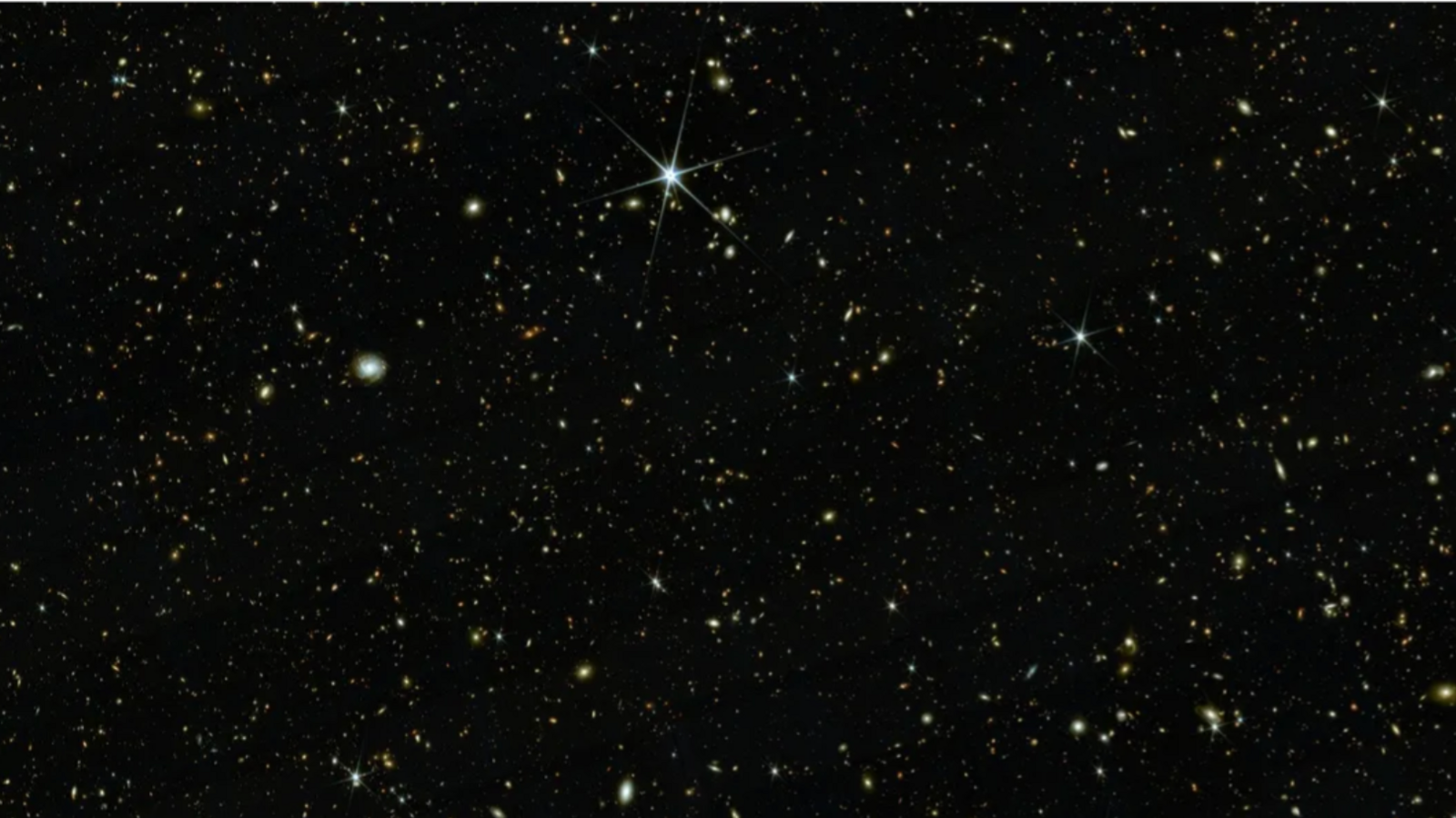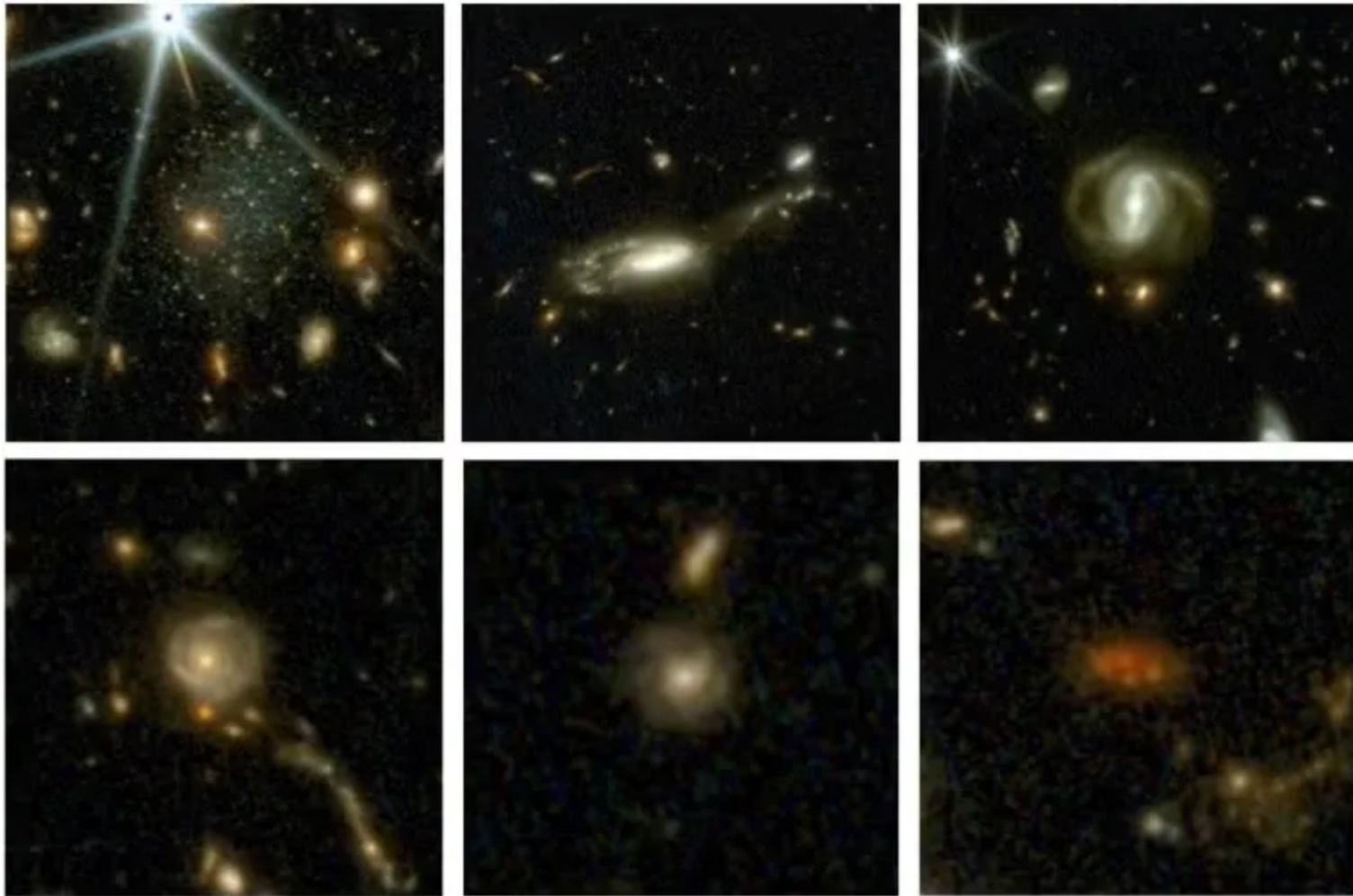Scientists unveil largest ever map of the Universe

The new map features nearly 800,000 galaxies
- Published
Since its launch on Christmas Day 2021, the James Webb telescope has captured incredible images of space and helped scientists learn more about the formation of galaxies, stars and planets over billions of years.
And, now there is another discovery to add to the list.
Scientists have used 255 hours of data from the telescope to unveil the largest map of the Universe to date.
The map features nearly 800,000 galaxies across 13.5 billion years of cosmic history.
More from the James Webb Telescope this way
Amazing 'cosmic tornado' captured by James Webb Space Telescope
- Published27 March
Sharpest ever pictures taken of the Horsehead Nebula
- Published1 May 2024
Is that a penguin in space?
- Published17 July 2024

The ground breaking map shows galaxies, stars and giant black holes
This ground-breaking map was created by the Cosmic Evolution Survey collaboration (COSMOS) and covers a part of the sky about three times the size of the Moon.
It includes amazing images and details of nearly 800,000 galaxies across billions of years.
Because the James Webb telescope can see really faint light, it is able to spot galaxies that are very far away (which means they are billions of years old)
Included in the map are galaxies and stars that are 13.5 billion years old.

From upper left to lower right: present-day universe, and 3 billion, 4 billion, 8 billion, 9 billion and 10 billion years ago.
The data for this map has existed for a while, but required expert analysis and a supercomputer to interpret it.
Over the last two years, a team of international scientists have worked to turn the data into an interactive map which anyone can use to explore.
The map will also help scientists learn and understand more about how the Universe has changed since its beginning.
